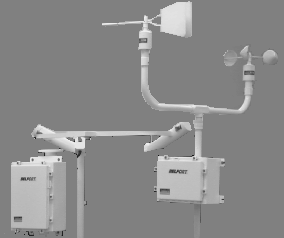| (1) WIND SHIFT. | Wind direction changes by 45
degrees or more in less than 15 minutes and the wind speed is 10 knots or more
throughout the wind shift. |
(2)VISIBILITY. | Surface visibility as reported in the
body of the report decreases to less than, or if below, increases to equal or
exceed:
| (a) 3 miles. |
| (b) 2 miles. |
| (c) 1 mile. |
| (d) The lowest standard instrument approach procedure minimum as
published in the National Ocean Service (NOS) U.S. Terminal
Procedures. If none published, use 1/2 mile. |
|
| (3) RUNWAY VISUAL RANGE (RVR). | The highest
value from the designated RVR
runway decreases to less than, or if below, increases to equal or
exceed 2,400 feet during the preceding 10 minutes. U.S. military
stations may not report a SPECI based on RVR.
|
(4) TORNADO, FUNNEL
CLOUD, OR
WATERSPOUT. |
(a) is observed.
(b) disappears from sight, or ends. |
| (5) THUNDERSTORM. |
(a) begins (a SPECI is not required to report the beginning of a
new thunderstorm if one is currently reported.)
(b) ends. |
| (6) PRECIPITATION. |
(a) hail begins or ends.
(b) freezing precipitation begins, ends, or changes intensity.
(c) ice pellets begin, end, or change intensity.
|
| (7) SQUALLS. | When squalls occur. |
| (8) CEILING. | The ceiling (rounded off to
reportable values) forms or dissipates below, decreases to less than, or if
below, increases to equal or exceed:
(a) 3,000 feet.
(b) 1,500 feet.
(c) 1,000 feet.
(d) 500 feet.
(e) The lowest standard instrument approach procedure minimum as
published in the National Ocean Service (NOS) U.S. Terminal Procedures. If
none published, use 200 feet. |
| (9) SKY CONDITION. | A layer of clouds or
obscurations aloft is present
below 1,000 feet and no layer aloft was reported below 1,000 feet in the
preceding METAR or SPECI. |
| (10) VOLCANIC ERUPTION. | When an
eruption is first noted. |
| (11) AIRCRAFT MISHAP. | Upon
notification of an Aircraft Mishap unless there has been an intervening
observation. |
| (12) MISCELLANEOUS. | Any other
meteorological situation designated by the responsible agency or which, in the
opinion of the observer, is critical. |


 GENERAL
GENERAL